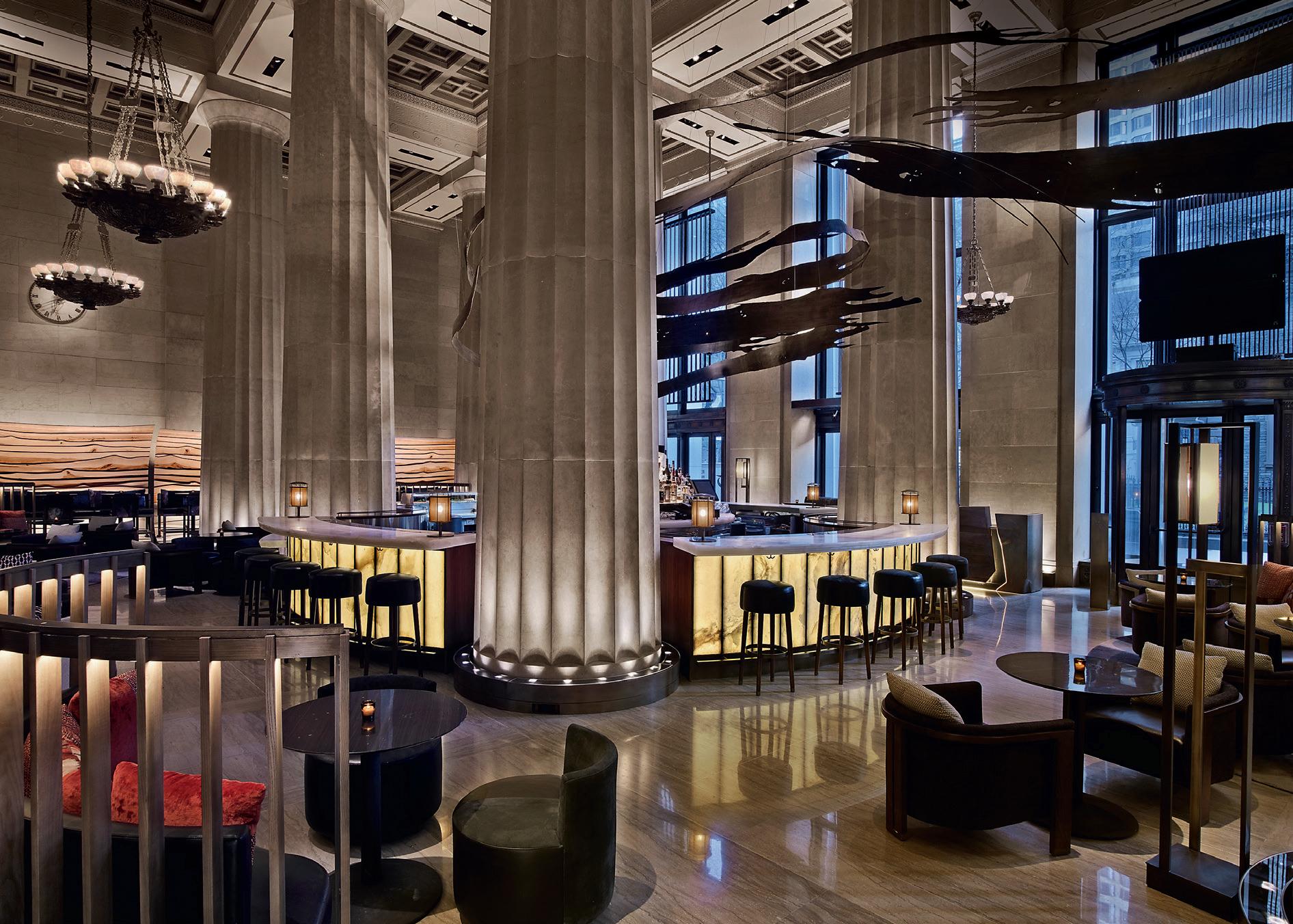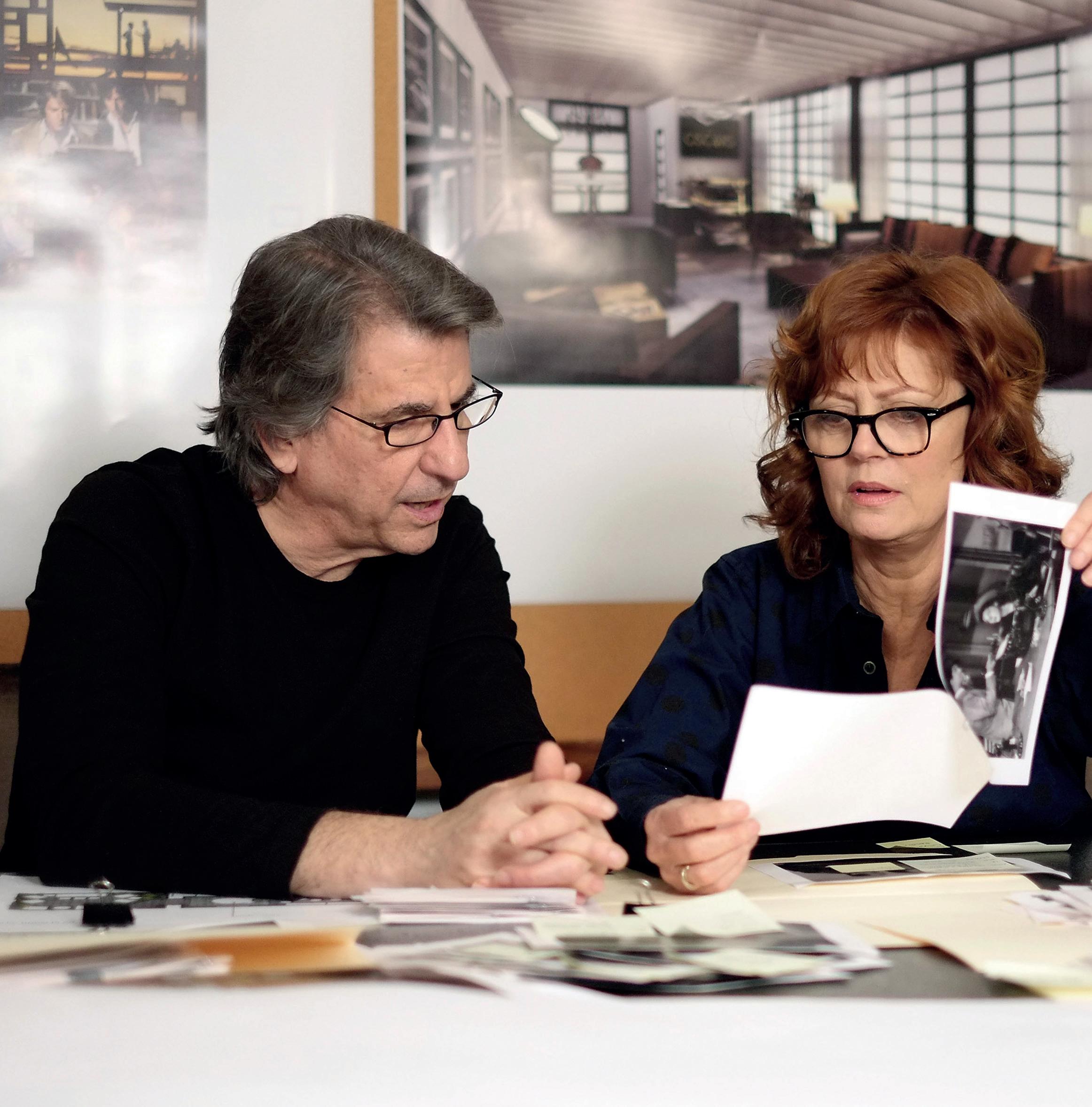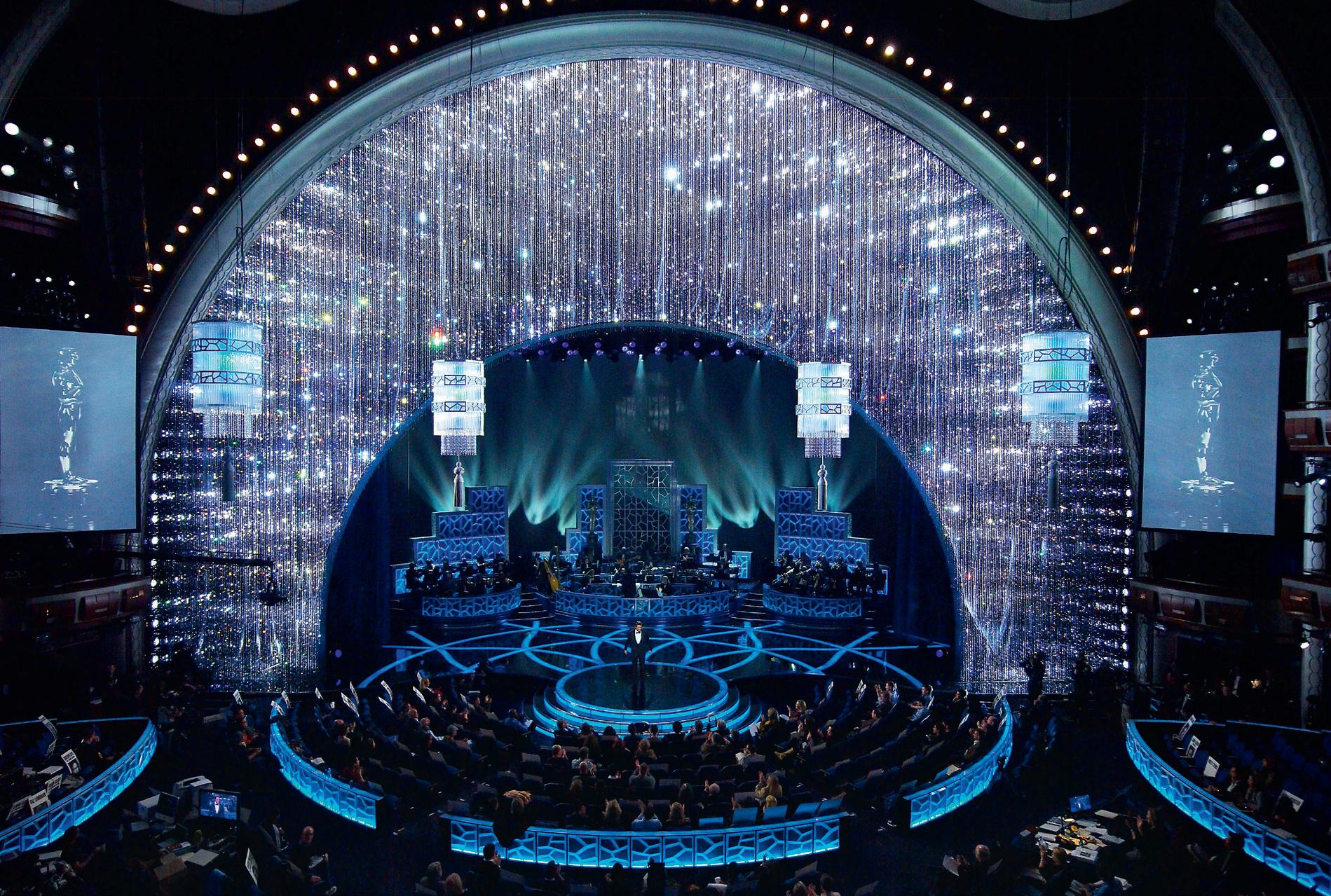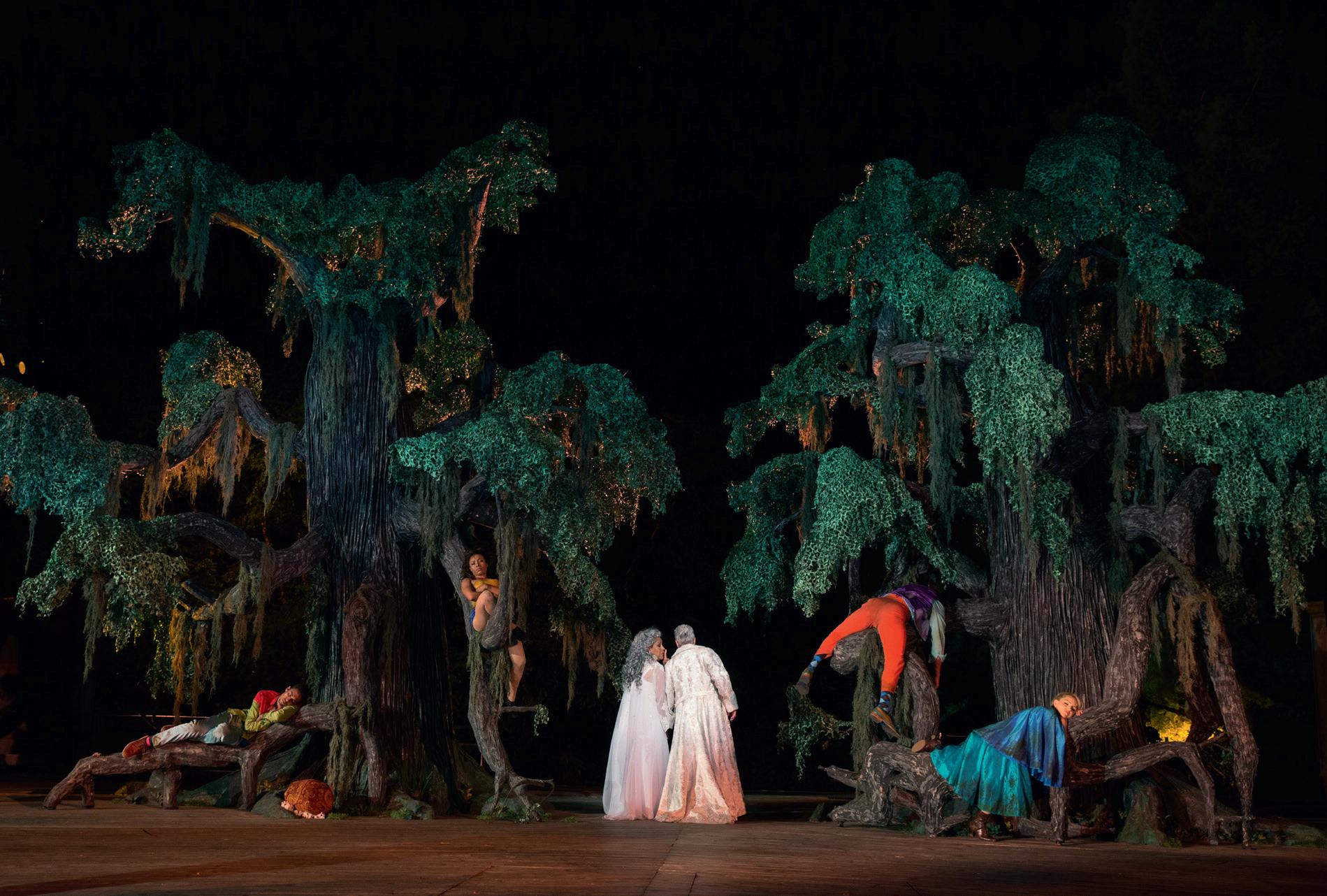
6 minute read
Rock on
Terminal passengers sitting in armchairs or buying food and drinks from one of the central counters in the dining area
David Rockwell, arguably the U.S.’ foremost architect, ponders the serious question: Why does he, like so many other designers, only wear black? Words Josh Sims Portrait Brigitte Lacombe


Manhattan Grand Central
“Well, part of the answer is that if you have a basic uniform it’s one less thing you have to think about. And I have moved on from black...to blue,” Rockwell chuckles. “But I also love texture, so if you simplify the visual that allows you to focus more on that aspect. I’m actually meant to be going to a party at the weekend at which the theme is ‘The Great Gatsby’ so I’m not sure how I’m going to make a black t-shirt work at that one. I’ll just add a scarf.”
Rockwell typically gives his creativity much greater consideration. The architect who has designed airports and holiday resorts, hotels, public institutions and even playgrounds, who pioneered the restaurant as a design hotspot (especially for the Japanese Chef Nobu) and restored New York landmarks FAO Schwarz and Grand Central Station, typically studies a new category of project for years before embarking on it.
“Part of what I think is critical in a design process is to do as much research as you can and at some point then taking that information and, with a beginner’s mind, to think about an approach that might be a unique outgrowth of all of that research,” he explains. “I do think the idea of
Susan Sarandon and David Rockwell co-curate artwork to be displayed in the Architectural Digest Greenroom at the 86th Academy Awards on February 4, 2014 in New York City

the beginner’s mind, that ability to stay curious, is really important. It’s a toxic thing to think you know the answer to a new project before you start it. [That said] a friend of mine, who’s a musician, says that at some point you have to conjure a solution.”
Indeed, it’s an approach Rockwell takes with his personal life too. He starts his day with an iced cappuccino and an hour of piano practice. He played as a child, lost the habit as his architectural studies took over, and four years ago decided to take to the keys again. He found nonagenarian pianist maestro Seymour Bernstein, persuaded him to become his teacher and now spends four months to a year working on a piece of classical music before, as his friend might put it, “at some point putting that preparation away and [recognizing that] you have to play the music.”
But ‘conjure’ is an apt choice of words, not least because Rockwell collects vintage illustrations of the workings of stage illusions, though concedes that he’s no magician himself. “When my kids were little I’d do these terrible tricks and I’d say, ‘I’m not going to tell you how that was done’ and they’d say, ‘We don’t even care, it was that bad’,” he says. Some 15 years after founding his design studio, which now employs around 250 people, his career found a second string in stage design. He’s since created the sets for plays and hit Broadway shows including Hairspray, Tootsie and The Rocky Horror Picture Show. Rockwell has been awarded the Presidential Design Award and a Tony. “And the Tony Awards is a much more fun event,” he laughs.
That Rockwell segued into the theatre world might, were his life-story to be made into a movie, give it a recurring theme. His mother was a vaudeville dancer and choreographer. He and his four older brothers amounted to what he calls a kind of “very hyper theatre group”. And one of his foundational experiences was, at the age of 12, being taken to New York to have lunch at Broadway restaurant Schrafft’s and then to see Fiddler on the Roof.
“I became obsessed with the idea of theatre. I went all the time,” Rockwell says. “I’d sit there criticizing the sets. In fact, later I went to one show with a lighting designer and after I was giving my critique when he said to me, ‘Well, if you’re so smart, what would you do?’. Let’s say it took me a while to answer that one.”

OMNIA, nightclub, Caesars Palace, Las Vegas, 2015

AL POWERS, POWERS IMAGERY LLC, OFF-BROADWAY PRODUCTION OF A MIDSUMMER NIGHT’S DREAM
(2017) / PHOTOS © JOAN MARCUS
Inevitably perhaps, in this Rockwell biopic, there’s a neat overlap of his designs for the theatre and his more ‘conventional’ architectural projects, as is explored in a new book on his work, Drama (published by Phaidon). Rockwell once joked how some architects seem to idealize their buildings as unsullied by those messy things called people. Conversely, as in the theatre, so in architecture, Rockwell sees the idea of the audience as essential.
“If you look at the built world through the filter of theatre you have to acknowledge that if there’s no audience there’s no drama,” he explains. “In theatre you have to seduce the audience and you need to do that too with architecture.”
“The toolbox is different [for theatre and architecture] but both also need to bring together various people, each with their own expertise, but which have to work together as an ensemble,” he adds. “And another intuitive example is movement or choreography in theatre. Similarly, in architecture, we define spaces by the doors, by that sense of transitioning from one space to another.”
His theatre design work might be said to have given Rockwell an unusual perspective on his architectural work too. If most architects design with something of an Ozymandian viewpoint - expecting their buildings to last forever - he’s fascinated by the idea of the transitory. He’s designed a pop-up stage for the TED Theater, for example, and a mobile kitchen for British chef Jamie Oliver. Rockwell puts that ease down to the circumstances of his childhood – his father died when he was three, and the family moved around a lot, from Chicago to New Jersey to Mexico...
“Well, if you ask whether I want the buildings we’ve designed to last forever, of course I do,” Rockwell laughs. “But I do think that the goal in much architecture of being permanent sometimes gets in the way of looking at it in other ways. I think that notion of the ephemeral that’s so powerful and visible in theatre really inspired me. In a two hour theater experience, there’s something there that will never happen that way again. And I think that idea of the unique experience is very important when thinking about how we create the built world around us, and design from the audience out, not the facade in.”
It’s an approach that will no doubt inform the many kinds of projects he’s yet to take on, but which remain on his hit-list and which he regards as ripe for reinvention: the hospital, opera house and public park among them. And ever the man who loves a show, perhaps an Olympic opening ceremony.
“Yeah,” he says, “I’d love to try one of those because, you know, I love the small, intimate scale of everything...” Drama by David Rockwell with Bruce Mau, edited by Sam Lubell, is published by Phaidon, £39.95 (phaidon.com)










